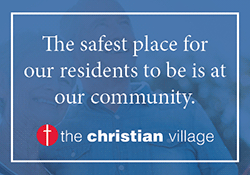|
 In a New York Times interview, Winslet recounted heartbreaking
scenes in Kensington, once described as the “Walmart of Heroin.” In one
instance, she saw a man who “had been amputated from the knee down on his right
leg, and he was injecting into the toes of the other foot.” In a New York Times interview, Winslet recounted heartbreaking
scenes in Kensington, once described as the “Walmart of Heroin.” In one
instance, she saw a man who “had been amputated from the knee down on his right
leg, and he was injecting into the toes of the other foot.”
Though rarely so visible as in Kensington, opioid addiction is
a brutal reality in other Pennsylvania communities, whether in suburban
Philadelphia or York County, which recorded its most-ever overdose deaths last
March. Overdoses reflect America’s ongoing “deaths of despair,” a term coined by
Princeton’s Anne Case and Angus Deaton to describe America’s higher mortality
rates caused by suicide, alcoholism and opioid addiction. The opioid crisis
afflicts not only middle-aged, white, working-class Americans but also
minorities throughout urban America.

Data indicate that COVID-19 intensified the nation’s opioid epidemic, which
claimed nearly 500,000 lives between 1999 and 2019. The Centers for Disease
Control found that more than 81,000 overdose deaths occurred nationally between
2019 and 2020 – the highest in any 12-month period ever measured. Overdose
deaths have continued to rise.
The crisis is especially acute in Pennsylvania. Before the pandemic, the state’s
Department of Health reported a 19% decline in overdose deaths from 2017 to
2019, which nevertheless represents 4,458 deaths in 2019 – a staggering 35
people per 100,000. But the pandemic-driven recession caused overdose numbers to
skyrocket. As the state’s Department of Drug and Alcohol Programs found, 2020
was likely the worst year on record for overdose deaths in the Keystone State.
Pennsylvania’s rural areas illustrate this disturbing trend. According to the
Center for Rural Pennsylvania, rural overdose rates consistently outpaced urban
areas, peaking at five per 100,000 in July 2020. Meanwhile, Pennsylvania’s
Association of County Drug and Alcohol Administrators reported that in Blair
County alone, the coroner projected a 78% spike in overdose deaths in 2020
compared to 2019. This increase partly stems from the reality that access to
addiction treatment is harder to find in rural communities.
But the Keystone State’s cities aren’t spared, either. In urban
Pennsylvania, Black residents are consistently hit harder than whites,
indicative of wider COVID-era trends disproportionately affecting Black
communities. Philadelphia saw an 11% increase in overdoses in the first three
quarters of 2020, for example – but overdoses among Black residents rose 40%.
Meanwhile, overdoses in Allegheny County, home to Pittsburgh, rose 22%. As the
Pittsburgh Post-Gazette recently reported, county data indicate that fatal
overdoses among Black residents have begun to “consistently outpace” those of
whites.
[ to
top of second column] |

Obtaining treatment for opioid addiction, though,
is difficult in both rural and urban Pennsylvania. And the COVID-19
crisis worsened the problem. Spotlight PA reported, for example, how
many addiction clinics initially closed or lost funding.
But since last spring, a transformed regulatory
environment has changed everything for clinics that managed to stay
open. This was the case for Prevention Point Philadelphia, a
nonprofit harm-reduction organization in Kensington. “There’s been a
pretty marked shift for us in our small clinic and in the broader
community,” said Kaelee Shepherd, a PPP coordinator.
For instance, the pandemic loosened restrictions on
medication-assisted treatment for opioid use disorder, resulting in
easier access to treatment. Some insurance companies no longer
require urine tests for access to suboxone, and federal drug
agencies now permit telehealth appointments – instead of mandatory
in-person meetings – for suboxone prescriptions. Such changes
benefit those who couldn’t access drug treatment locations due to
inhibiting factors like transportation and child-care costs.
As Shepherd told me, fewer restrictions also mirror
the declining stigma of addiction. “We’ve started to treat opioid
use disorder more in line with how we treat diseases like diabetes
or high blood pressure,” she noted.
Despite encouraging developments, PPP still confronts challenges.
Neighborhood residents, for example, are often unsure if the clinic
is open. PPP also struggles with a reduction in resources for the
population it serves and the closure of welfare offices, whose
dependents turned to PPP for updates on their benefits. The pandemic
didn’t create new problems so much as it exacerbated existing ones.

Overall, the opioid epidemic has transcended Pennsylvania’s
urban-rural divide. Though media coverage and public attention have
stalled, Pennsylvanians can’t afford to turn away from this crisis.
Winslet told the New York Times’s Maureen Dowd that she was
“staggered that there aren’t more … support networks in place to
help with people.” As the pandemic slowly fades, the deaths of
despair will keep occurring.
Brendan Foster is a journalist and writer based in
Hershey, Pa.
Click here to respond to the editor about this article |